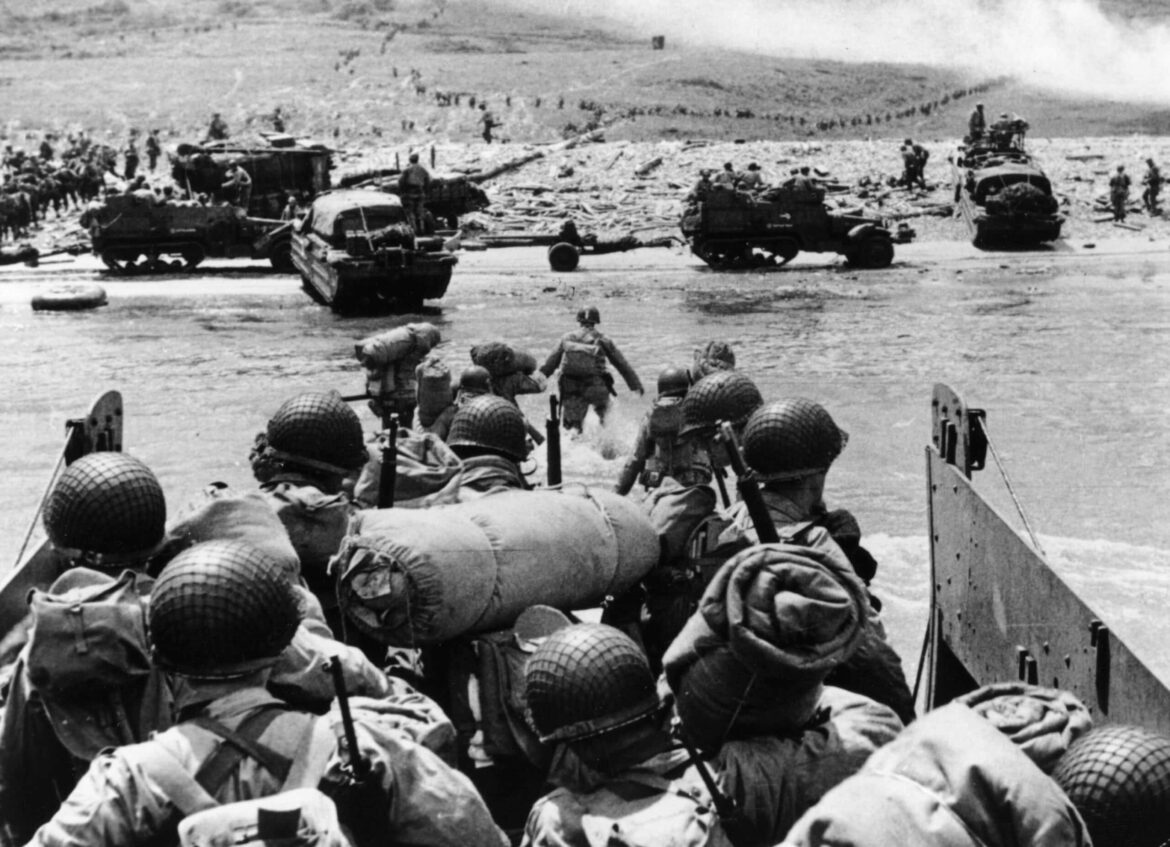563
The successful outcome of D-Day on June 6, 1944, marked a turning point in World War II and had a lasting impact on European history.
The sequence of events and significance of D-Day
D-Day, also known as June 6, 1944, marks one of the most significant turning points in World War II.
- On this day, Operation Overlord, the Allied landing in Normandy, France, began.
- On D-Day, an estimated 156,000 Allied soldiers from the US, Britain, Canada, and other countries were involved.
- The significance of D-Day lies not only in its historical context, but also in the strategic and symbolic consequences it brought about. The Allied invasion decisively weakened the forces of the Third Reich in Europe and paved the way for the liberation of the continent.
- The preparations for D-Day were lengthy and complex. The Allies planned and trained for months for this operation to ensure that it went as smoothly as possible.
- On the morning of June 6, 1944, the invasion began with air strikes and airborne landings, followed by amphibious landings on the beaches of Normandy.
- The beaches were divided into five sectors, which the Allies codenamed Utah, Omaha, Gold, Juno, and Sword. Each sector presented its own challenges and difficulties, but ultimately the Allies managed to establish themselves on all fronts and consolidate their position.
The duration and consequences of D-Day
Although D-Day itself was only a single day, its impact was long-lasting.
- The Allies used the success of the invasion to strengthen their position in Western Europe and ultimately defeat the German Reich.
- Fighting in Normandy continued for several weeks, but D-Day marked the beginning of the end of the German occupation of France and the beginning of the end of World War II.
- Operation Overlord was a turning point that paved the way for the liberation of Europe from Nazi tyranny and made a decisive contribution to the Allied victory.
Interesting facts about D-Day in Normandy
The following information highlights the complexity and significance of D-Day and provides a more comprehensive insight into this historic event.
- Planning and logistics: Preparing Operation Overlord was a logistical masterpiece. Huge amounts of equipment and troops were moved and kept secret to ensure the surprise. To deceive the German defences, the planning also included complex deception manoeuvres.
- The role of intelligence: The success of D-Day also depended on the work of intelligence agencies. The use of spies and the decryption of German codes played a crucial role in preparing for the invasion by providing the Allies with important information about German defenses.
- The role of resistance movements: Local resistance movements in the German-occupied territories played an important role in the preparations for D-Day by gathering information, carrying out acts of sabotage, and assisting the Allies during the landings.
- The human side of D-Day: Behind the strategic decisions and military operations of D-Day lie countless individual stories of courage, sacrifice, and the struggle for survival. The personal experiences of the soldiers on the beaches of Normandy offer a deep insight into the reality of war and human nature in extreme situations.

